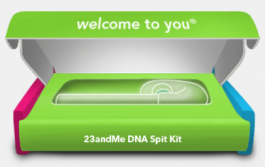PCPs in the current reimbursement model are obliged for business reasons to see too many patients per day which of course means less time per patient. PCPs are frustrated and patients are less satisfied. With less time it is hard to build a strong doctor – patient relationship and without it there is less opportunity to build trust. Readers of my posts know that I am a strong advocate for primary care and for granting the PCP added time per patient but doing so with no decrement in income. Here is an innovative experiment by an insurer to incent PCPs to offer more time to those patients with chronic illnesses while enhancing preventive care to all.
Added time and good care coordination will improve the quality of care for the individual patient with a chronic illness and yet will reduce costs by eliminating excess specialists visits, tests, procedures and, by improving care quality, it will reduce the need for hospitalizations. That was the assumption underlying a program by a large not for profit BlueCross/Blue Shield plan – CareFirst. Fundamentally the plan incents PCPs with opportunities for increased income in return for giving added time and good care coordination to those with chronic illnesses along with enhanced preventive care to all patients.
The insurer calculated that about 80% of their medical expenditures went towards the care of just 15% of patients. These were patients with complex chronic illnesses. Knowing that primary care physicians receive about 5% of total healthcare expenditures it was hypothesized that they are in a position to strongly impact much of the other 95%. The insurer also wanted to raise awareness of healthy lifestyles to assist all of their enrollees to remain healthy. So the agenda was to create incentives for PCPs to have an impact to reduce the total cost for those with chronic conditions while improving the care and concurrently maintain the health of the remaining enrollees.
Oversimplified, the new program works like this. PCPs form into actual or virtual groups or panels of 5 to 10 and enter into an agreement with the insurer which then increases their reimbursement by 12% for each visit. The insurer also agrees to pay the physician within one business day, reducing the doctor’s need for working capital.
An actuarial analysis of the PCP group’s patients is done using claims data from the prior year to create an anticipated “global budget” for the coming year. The 15% or so of patients that need chronic illness care coordination are “flagged.” The PCP’s obligation is to give those patients whatever added time is needed per visit, to create a complete care plan and to post it in an electronic medical record (for which the PCP gets an additional $200). This serves as automatic preauthorization; no further calls will be needed for tests, procedures, etc. – a major time saver for the PCP and the office staff. The concept also anticipated that with extra time per patient, the PCP would be able to handle most issues including those of patients with complex chronic illnesses, reducing the need for specialist referrals. Finally, the insurer makes available a nurse “care coordinator” at its expense to call the patient as often as necessary to check on medication use, medication side effects, weight gain or whatever else the PCP has built into the care plan. The expectation starting out was that this approach of incentives for giving the patient with a chronic illness the intensive primary care and the care coordination needed would enhance quality yet reduce the overall expenditures for that patient.
If, at the end of the year, the PCP groups’ total claims came in under the projected global budget, the members of the virtual group would get back a portion of the savings. With these incentives, it was anticipated that the PCP would be sure to carefully coordinate care so that there were no excess specialist visits, no unneeded tests or procedures and, with better care overall, less ER visits and less hospitalizations. The end result, it was hoped from the start, would be higher quality care, lower total expenditures for that care, enhanced income for the PCPs and a more satisfying practice. It could be a win for everyone. Now three years in, the plan seems to be working. The physicians are pleased with the added income and the insurer is pleased that total costs have dropped.
The whole concept was to coordinate the care that the patient receives with the expectation that the patient will be better served, the providers will be more satisfied and the total costs will be reduced. It is a transformational change in how the PCP functions. It is an equally huge transformational change for the insurer –a change that accepts that extensive primary care with care coordination costs extra money but recognizes that the end result is better quality at a lower total cost.
After two years, it was reported that it saved $136 million with the 297 panels of 3,600 PCPs that had joined the program caring for about one million individuals. All of the PCPs enjoyed the added income in their reimbursements and two thirds received end of year incentive payments as a result of the savings. Overall the average PCP in the program received about 29% more than they otherwise would have under the standard fee schedule.
At the end of three years and with enough data to be actuarially credible, there have been quite definite improvements in ten measures such as costs per member per month, number of emergency visits, admissions per 1000 members, length of stay, cost per admission, and readmissions within 30 days after discharge, etc. while maintaining or improving quality measures. Not all panels of PCPs were as successful as others and those that were tended to be successful in each of the three years in the program. At the end of the third year, about 60% of the panels were granted an incentive award for beating their projected global budget. The successful panels tended to be those in small private practices and, interestingly, had sicker patients under care yet they maintained higher quality scores. Another important finding was that some specialists tended to much higher utilization (and therefore costs) than others despite similar patient problems. PCPs who tended to refer to high utilization specialists were much less likely to achieve an end of year incentive payment.
Of course, there are some questions to raise. If the PCP is spending more time with these patients but still has the same total size practice, then where is the time coming from? Does it mean less time for other patients? PCPs have now learned which specialists expend more dollars per patient than others. Will their referrals gravitate to these specialists regardless of known or perceived quality? Patients will likely in the future be offered incentives for choosing the PCPs that are most effective with this program; is that appropriate? And what about those PCPs who have converted their practices to direct primary care? They are actually saving the insurer considerably, probably much more than the incented PCPs in this program. The insurer should consider paying all or part of the DPC fee for their insureds since the insurer is benefiting substantially yet at no cost to itself.
Perhaps the most important outcome, from my perspective, is the recognition by a major insurer that it is possible to create a new incentive-based approach to reimbursement – in this case within the old fee-for-service model – which actually costs more for primary care (up from about 5% of total costs to about 7-8% of total costs) yet significantly reduced those total costs of carewhile improving quality.
Note: I talked to CareFirst’s CEO, the former chairman of the board and a vice president about the program but I have no financial relationship; this program is used for illustrative purposes only and is not meant to be an endorsement.








